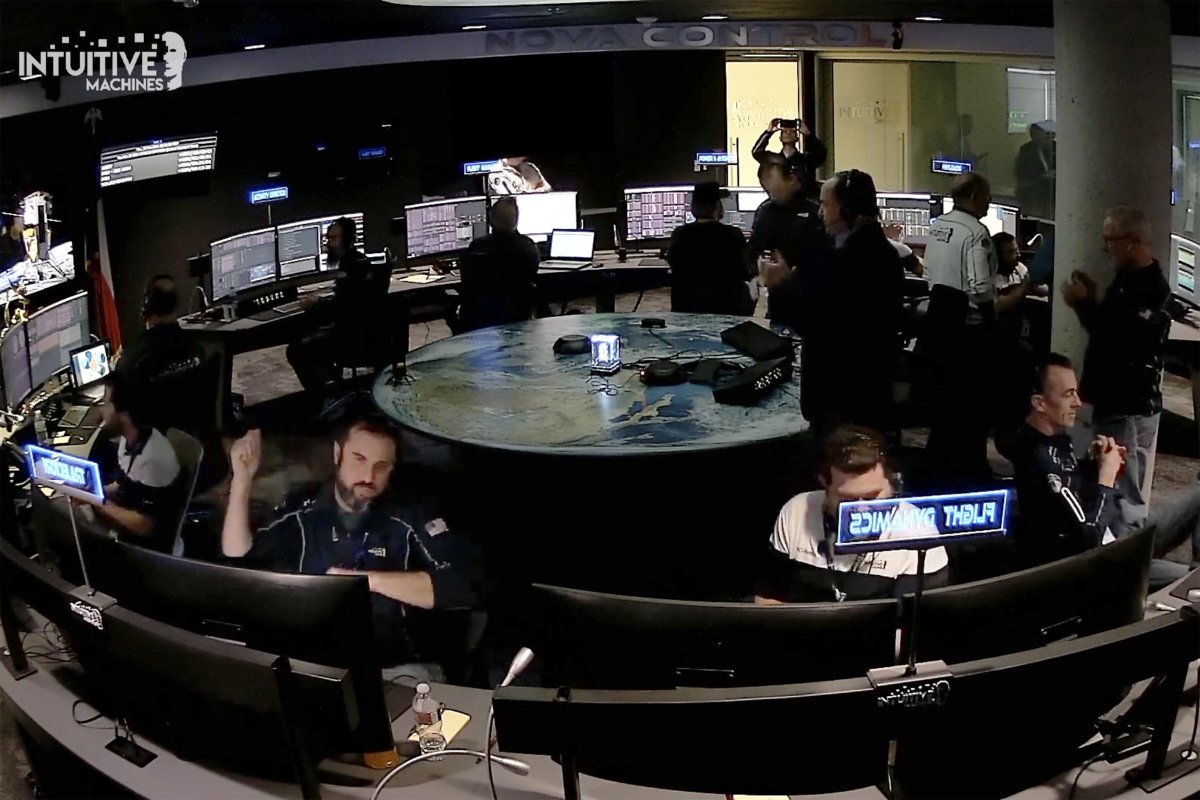“The US has returned to the moon.”
In 1969, at the age of 11, the boy began dreaming about space after watching humanity’s first moon landing on his neighbor’s TV in his hometown, Iran. He left for the United States at the age of 18 to go to space. 55 years later, on the 22nd (local time), the boy’s dream finally became a reality. Odysseus (Nova-C) of Intuitive Machines, a space startup founded by Kam Kaparian (66), became the first private company to land on the moon.
Odysseus, which made the dream of a private company come true, landed at the crater ‘Malaffert A’, 300km from the South Pole of the Moon, at 6:24 PM on the 22nd (8:24 AM on the 23rd, Korean time), U.S. Central Time. Intuitive Machines said through “We are working on it,” he said.
Local media said, “The entrepreneurship spirit of American startups and the government’s abundant space experience talent and investment support played an important role in making the dream a reality.” America’s so-called ‘New Space’ economy is beginning to bear fruit.
Kafarian, an engineer and businessman, met engineer Stefan Altemus while collaborating with the National Aeronautics and Space Administration (NASA), and together they founded Intuitive Machines in 2012. At first, we pursued a project to apply NASA technology to the healthcare field, but in 2018, we actively participated after hearing that NASA was looking for a private company to carry out a mission to install a scientific sensor at the lunar south pole. This is NASA’s so-called ‘Commercial Lunar Payload Service (CLPS)’ program.
In an interview with Fast Company earlier this month, CEO Altemus said, “We chose ‘moon exploration’ because we felt the existing business did not fit our DNA. We work with great people who want to change the world in a good direction.” “He said. The challenging spirit of space enthusiasts who are not afraid of failure shone through.
However, lunar exploration was by no means an easy task, with national-level projects often failing. Astrobotic, which signed a contract with NASA, also launched the lunar lander ‘Peregrine’ last month, but it ended in failure. Intuitive Machines, many of its 110 employees are from NASA, focused on technology development, including developing a self-navigation system that accurately identifies the landing site. It received $118 million (approximately 157.3 billion won) in support from NASA, and the insufficient funds were raised through an initial public offering (IPO) last year.
In addition to its existing mission, the lunar lander Odyssey also carried artist Jeff Koons’ moon-shaped artwork and spacecraft protection insulation materials from outdoor company Columbia. It is said to reflect the dream of creating a new Earth by foreseeing the coming space economy era and building various infrastructures on the moon.
The ‘New Space’ era, centered on private companies, was largely based on innovation led by eccentric American entrepreneurs. Elon Musk, CEO of Space Another billionaire, Amazon founder Jeff Bezos, also founded Blue Origins to achieve his dream of space travel and succeeded in space tourism on his own rocket in 2021. Wall Street predicted that “thanks to the new space economy, the space industry could grow to 1 to 2 trillion dollars in the future.”
Kim Seung-jo, professor emeritus at Seoul National University and former director of the Aerospace Research Institute, said, “The reason why U.S. private companies were able to successfully land on the moon was because of the disruptive innovation of Space He advised, “Korea should also actively participate in the era of space development by joining hands with the public and private sectors based on efficient management of development costs.”
New York =
Source: Donga
Mark Jones is a world traveler and journalist for News Rebeat. With a curious mind and a love of adventure, Mark brings a unique perspective to the latest global events and provides in-depth and thought-provoking coverage of the world at large.

